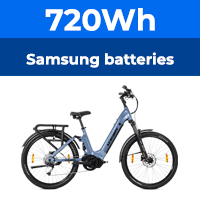I have a 36v 25ah battery, I'm trying to do a balance charge, has been on a few days only getting to 41.4 seems to have stopped but being a larger battery am sure will take a long time to balance, is fairly new , good quality cells, good quality voltage metre, while reading the voltage I noticed the battery was switched on ,so I switched it off , not thinking would be much difference as no real draw, thinking maybe it should on for the bms ? anyway when I switched the battery off it reads 41.7 , when switched on 41.4, why the big difference and should it be switched on or off while charging ?? by switched on I mean the switch on the battery , not connected to the bike, edit , I'm now thinking off for sure , as if the voltage is higher when off then that's the voltage I want , I don't want to charge to 42v when on then switch off and goes over 42, so yeah off , will leave on another day or so see if can get to 42, then I will only charge 80% for most uses or 39.5v with an occasional balance charge, I think people should think of this more , the last 20% of the charge is what I hear "stresses" the battery,so buy a bigger battery than you think you will need and keep it in the sweet spot range, ie only charge to 80% and don't completely discharge and will hopefully last a lot longer, saying that will be prob old "tech" soon anyway lol, anyway still wondering why the difference in V vs on/off ?
Last edited:




